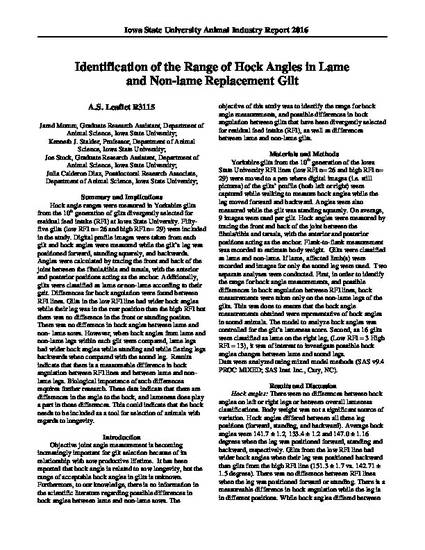
Hock angle ranges were measured in Yorkshire gilts from the 10th generation of gilts divergently selected for residual feed intake (RFI) at Iowa State University. Fifty-five gilts (low RFI n= 26 and high RFI n= 29) were included in the study. Digital profile images were taken from each gilt and hock angles were measured while the gilt’s leg was positioned forward, standing squarely, and backwards. Angles were calculated by tracing the front and back of the joint between the fibula/tibia and tarsals, with the anterior and posterior positions acting as the anchor. Additionally, gilts were classified as lame or non-lame according to their gait. Differences for hock angulation were found between RFI lines. Gilts in the low RFI line had wider hock angles while their leg was in the rear position than the high RFI but there was no difference in the front or standing positon. There was no difference in hock angles between lame and non- lame sows. However, when hock angles from lame and non-lame legs within each gilt were compared, lame legs had wider hock angles while standing and while flexing legs backwards when compared with the sound leg. Results indicate that there is a measureable difference in hock angulation between RFI lines and between lame and non-lame legs. Biological importance of such differences requires further research. These data indicate that there are differences in the angle to the hock, and lameness does play a part in those differences. This could indicate that the hock needs to be included as a tool for selection of animals with regards to longevity.needs to be included as a tool for selection of animals with regards to longevity.
Available at: http://works.bepress.com/kenneth_stalder/139/
